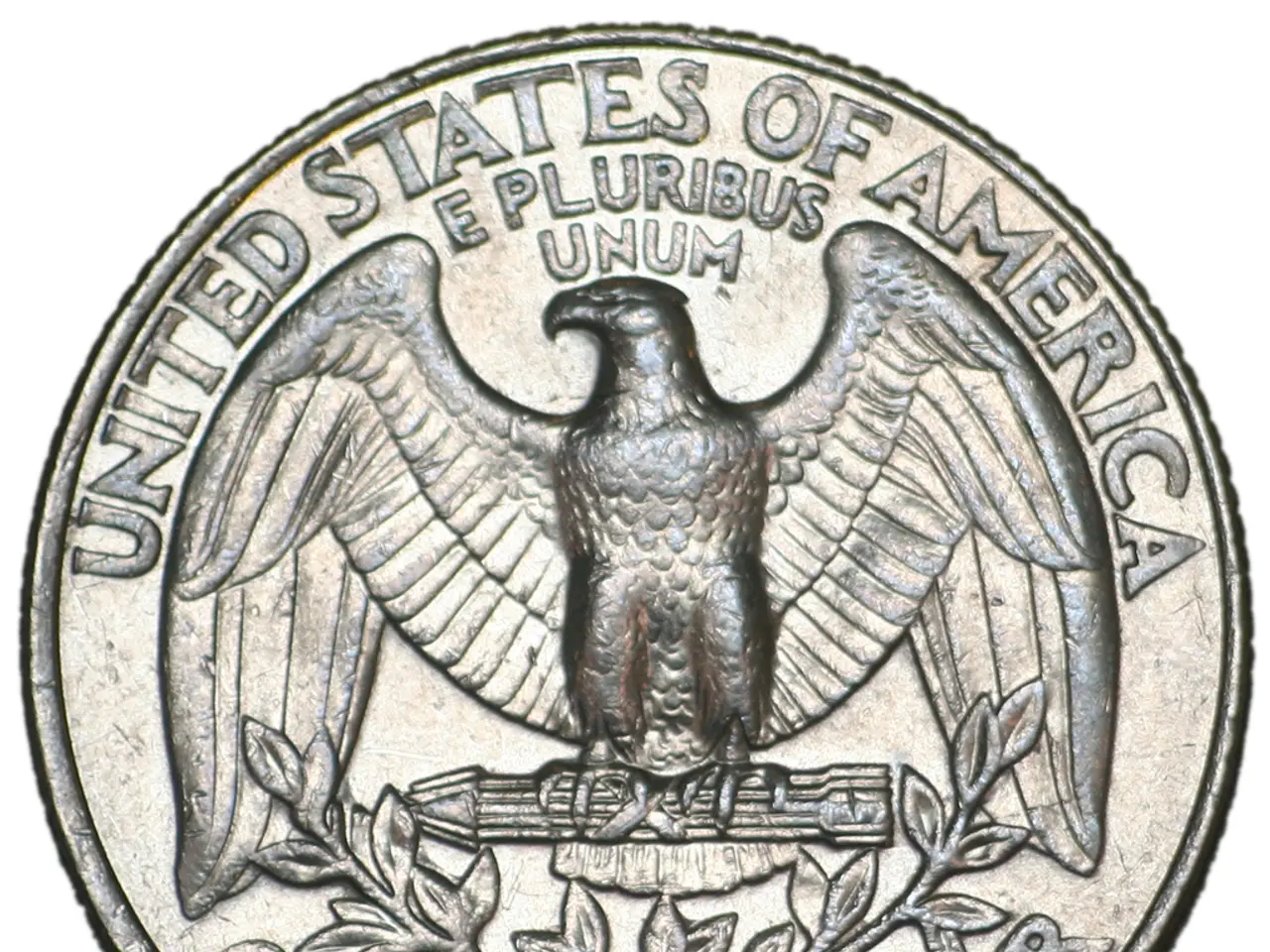Deteriorated projections by financial analysts on the exchange rate: 573 Tenge to the dollar
The Kazakhstani tenge (KZT) has been experiencing a significant depreciation in 2025, reaching historic lows of around 545 KZT per USD by July. This trend is largely attributed to inflationary pressures, increased import demand, fiscal expansion, and external uncertainties [1][5].
Key factors currently influencing the tenge exchange rate include high inflation, market-driven currency dynamics, increased foreign currency demand, external uncertainties, and seasonal factors. Annual inflation surged to 11.8% in June, driven by utility reforms, VAT increases, and imported inflation from Russia. Food and housing costs significantly contributed to this inflation spike [1][2].
Since 2015, Kazakhstan has shifted to inflation targeting with a freely floating tenge, amplifying its vulnerability to external shocks. Fiscal injections and large infrastructure spending have raised import demand by 18% year-over-year, putting upward pressure on the demand for foreign currency and weakening the tenge [5].
Ongoing sanctions risks, U.S. foreign policy uncertainty, and weaker export revenues reduce foreign currency inflows, further pressuring the tenge. Domestic demand for foreign currency rises during the vacation season and through import payments [3].
Forecasted near-term dynamics include continued pressure on the tenge, with an expected range of 530–550 KZT/USD in early August 2025, amid persistent speculative activity and devaluation expectations fueled by fiscal policy revisions [3].
The depreciating tenge fuels imported inflation, contributing to high Consumer Price Index (CPI) increases. Inflation pressures are partly driven by the weaker currency making imports costlier [1][2]. The central bank’s inflation targeting requires balancing higher inflation against growth; with persistent inflation above 11%, the National Bank must consider interest rate hikes or keeping rates elevated to stabilize prices and support the tenge [5].
However, rapid currency depreciation and fiscal expansion create risks of stagflation, as domestic production and GDP growth lag behind money supply increases [5]. The Association of Financial Organizations of Kazakhstan (AFO) attributes the concerns about accelerating inflation to increased tax burden, transfer of increased business costs, and the inevitable subsequent increase in the cost of imported goods due to the weakening of the tenge.
Experts now forecast a 11.3% increase in prices for goods and services over the year. The AFO expects the tenge to be worth 541.7 against the dollar by early September and 573 against the dollar by the end of the year [4]. Most analysts expect the base rate in Kazakhstan to remain at 15.25% in a year [6].
It's important to note that the statement does not provide specific details about the dollar exchange rate falling against the tenge after the National Bank of Kazakhstan's intervention statement, nor does it provide specific details about the Deputy Prime Minister Sklyar's forecast about the dollar rate [7].
The increased oil production by OPEC+ and the reduction in concerns about Russian oil supplies due to progress in the dialogue between the U.S. and Russia on the settlement in Ukraine are other factors affecting oil prices, but their direct impact on the tenge exchange rate is yet to be fully analysed [8][9].
This scenario maintains inflationary pressures at elevated levels, pushing the National Bank towards cautious monetary tightening to anchor the currency and control inflation [1][3][5].
Sources:
- Kazakhstan's Tenge Hits 15-Year Low Amid Inflation Fears
- Kazakhstan's Inflation Surges to 11.8% in June
- Kazakhstan's Tenge Forecast: 530–550 KZT/USD in Early August
- AFO Forecasts Tenge to be Worth 541.7 against the Dollar by Early September
- Kazakhstan's Central Bank Faces Challenges in Inflation Targeting
- Most Analysts Expect Kazakhstan's Base Rate to Remain at 15.25% in a Year
- Deputy Prime Minister Sklyar's Forecast About the Dollar Rate
- OPEC+ Increased Oil Production Affecting Oil Prices
- Reduction in Concerns About Russian Oil Supplies Impacting Oil Prices
The depreciating tenge, as seen in the forecast, is expected to remain around 530–550 KZT/USD in early August 2025, and the Association of Financial Organizations of Kazakhstan expects it to further depreciate to 541.7 against the dollar by early September [3][4]. The weaker tenge fuels imported inflation, contributing to high Consumer Price Index (CPI) increases [1][2].




